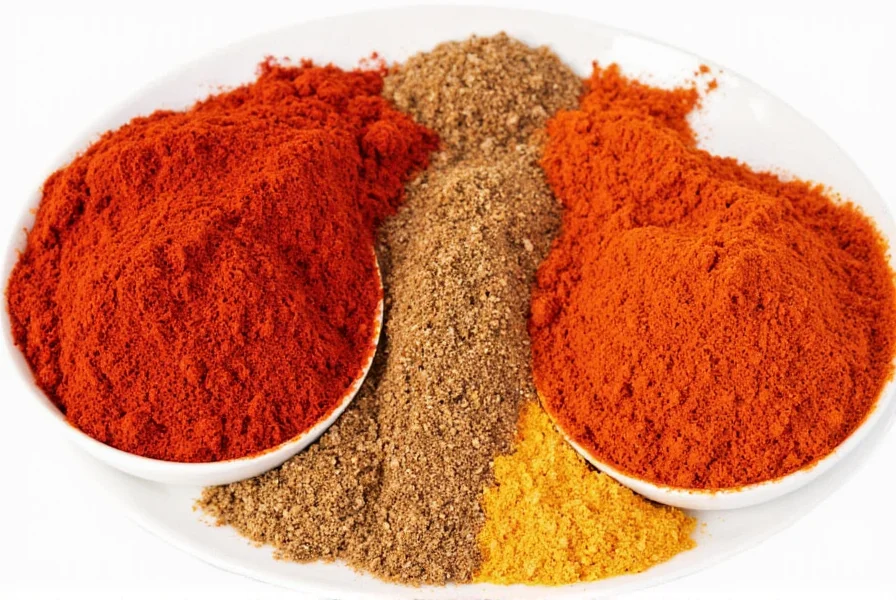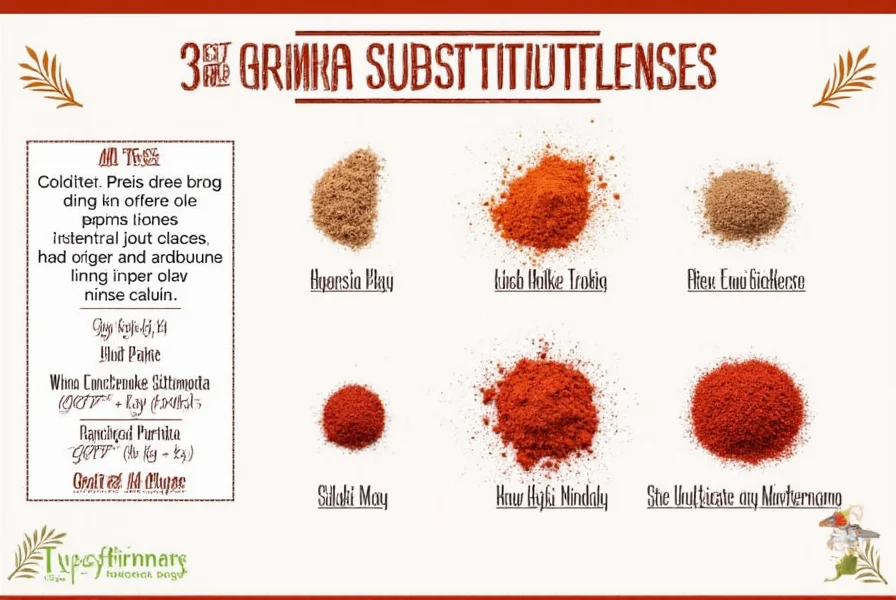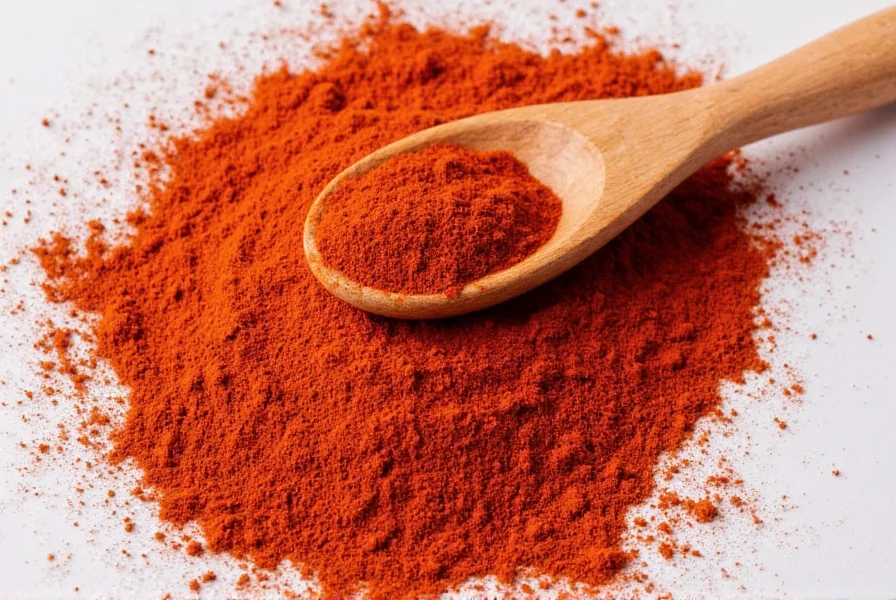The best replacement for paprika depends on which property you need to replicate. For color without heat, use tomato paste or roasted red bell pepper powder. For mild flavor, try Aleppo pepper (1:1 ratio). For heat, substitute with cayenne pepper at a 1:4 ratio. For smoked flavor, chipotle powder works well at half the amount. Sweet paprika can be replaced with a pinch of cinnamon plus red pepper flakes for depth.
When you're in the middle of cooking and realize you've run out of paprika, knowing effective alternatives can save your recipe. Paprika's unique combination of color, flavor, and sometimes heat makes it challenging to replace with a single substitute. This guide provides practical, tested alternatives based on what specific aspect of paprika your recipe requires.
Understanding Paprika's Key Characteristics
Paprika isn't just one uniform spice—it varies significantly by region and processing method. Hungarian paprika offers eight distinct varieties ranging from sweet to hot, while Spanish paprika (pimentón) comes in sweet, bittersweet, and smoked varieties. American paprika tends to be milder and less complex. Before selecting a replacement, identify which characteristic matters most for your dish:
- Color contribution - The vibrant red hue that enhances visual appeal
- Flavor profile - Earthy, slightly sweet notes without significant heat
- Heat level - Ranging from mild to hot depending on variety
- Smokiness - Present in smoked paprika varieties
Best Substitutes Based on Your Specific Need
When You Need Color Without Significant Flavor Change
If your recipe primarily uses paprika for its vibrant red color rather than flavor—such as in deviled eggs, potato salad, or certain sauces—consider these alternatives:
- Tomato paste - Use 1 teaspoon per ½ teaspoon paprika. Dilute with a bit of water if needed for liquid recipes.
- Roasted red bell pepper powder - Provides similar color with minimal flavor impact.
- Beet powder - For color only in non-tomato based dishes (use sparingly).

For Mild Flavor Replacement (Sweet Paprika Alternatives)
When you need to replicate sweet paprika's earthy, slightly sweet profile without heat:
- Aleppo pepper - Use equal amounts; provides similar earthiness with mild heat and citrus notes.
- Ancho chili powder - Substitute ¾ teaspoon for every teaspoon of paprika; offers mild heat and fruity notes.
- Combination approach - Mix ½ teaspoon garlic powder + ¼ teaspoon cumin + ¼ teaspoon red pepper flakes per teaspoon of paprika.
For Heat Replacement (Hot Paprika Alternatives)
When your recipe requires the heat of hot paprika:
- Cayenne pepper - Use ¼ teaspoon for every teaspoon of hot paprika (very potent).
- Crushed red pepper flakes - Substitute ½ teaspoon for every teaspoon of hot paprika.
- Hot chili powder - Use equal amounts, but check ingredients as many contain cumin and garlic.
For Smoked Flavor Replacement
When substituting for smoked paprika (pimentón):
- Chipotle powder - Use half the amount of smoked paprika required (more intense heat).
- Liquid smoke - Add 2-4 drops per teaspoon of smoked paprika called for.
- Smoked sea salt - Substitute ½ teaspoon smoked salt plus regular paprika for color.

| Substitute | Best For | Ratio | Flavor Notes |
|---|---|---|---|
| Cayenne pepper | Heat replacement | 1:4 | Significantly hotter, less earthy |
| Aleppo pepper | Mild flavor replacement | 1:1 | Slightly tangy, moderate heat |
| Chipotle powder | Smoked flavor | 1:2 | More intense smoke, noticeable heat |
| Tomato paste | Color replacement | 2:1 | Adds subtle sweetness, thickens liquids |
| Ancho chili powder | Mild flavor replacement | 3:4 | Fruity notes, less earthy |
Practical Substitution Guidelines for Common Dishes
Understanding paprika replacement for specific recipes ensures better results than generic substitutions:
In Goulash and Stews
Traditional Hungarian goulash relies on sweet paprika for both color and flavor. For authentic results, combine equal parts sweet Hungarian paprika substitute (like Aleppo pepper) with a pinch of marjoram. If using cayenne for heat, add it separately after establishing the base flavor.
In Rubs and Marinades
When paprika is part of a dry rub, the smoked variety contributes significantly to the final flavor. Replace smoked paprika with chipotle powder at half the amount, plus a small amount of smoked salt to maintain the smoke profile without overwhelming heat.
In Egg Dishes and Dips
For deviled eggs or ranch dressing where paprika is primarily decorative, tomato paste diluted with water provides similar color without altering flavor. Alternatively, a light dusting of beet powder works well for vibrant color in pale dishes.
Common Mistakes to Avoid When Replacing Paprika
Even experienced cooks make these paprika substitution errors:
- Using regular chili powder as a 1:1 replacement - Most chili powders contain additional spices that alter flavor profiles significantly.
- Ignoring regional differences - Hungarian sweet paprika differs from Spanish smoked paprika; match your substitute to the specific variety you're replacing.
- Overcompensating for heat - When replacing hot paprika, start with less heat and adjust gradually.
- Adding substitutes too early - Heat-sensitive substitutes like liquid smoke should be added near the end of cooking.
Creating Your Own Paprika Blend
For the most authentic replacement, consider making your own paprika substitute blend:
Sweet Paprika Alternative: Combine 2 tablespoons dried sweet red bell pepper powder + ½ teaspoon garlic powder + ¼ teaspoon onion powder + tiny pinch of cayenne (optional for depth).
Smoked Paprika Alternative: Mix 2 tablespoons dried red bell pepper powder + 1 teaspoon chipotle powder + 3-4 drops liquid smoke + ½ teaspoon garlic powder.
Dry the peppers thoroughly before grinding for best results, or use high-quality store-bought red bell pepper powder as your base.











 浙公网安备
33010002000092号
浙公网安备
33010002000092号 浙B2-20120091-4
浙B2-20120091-4